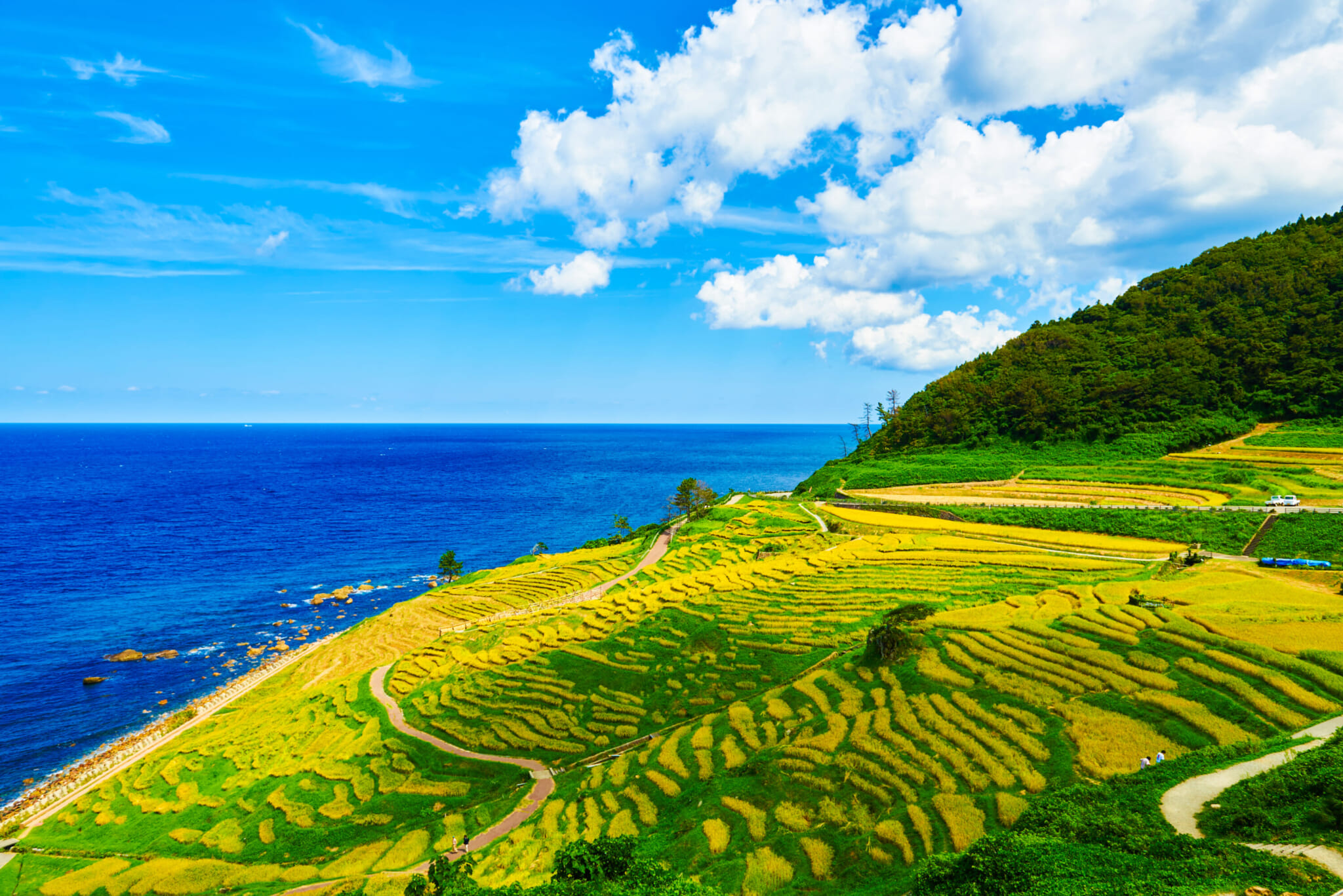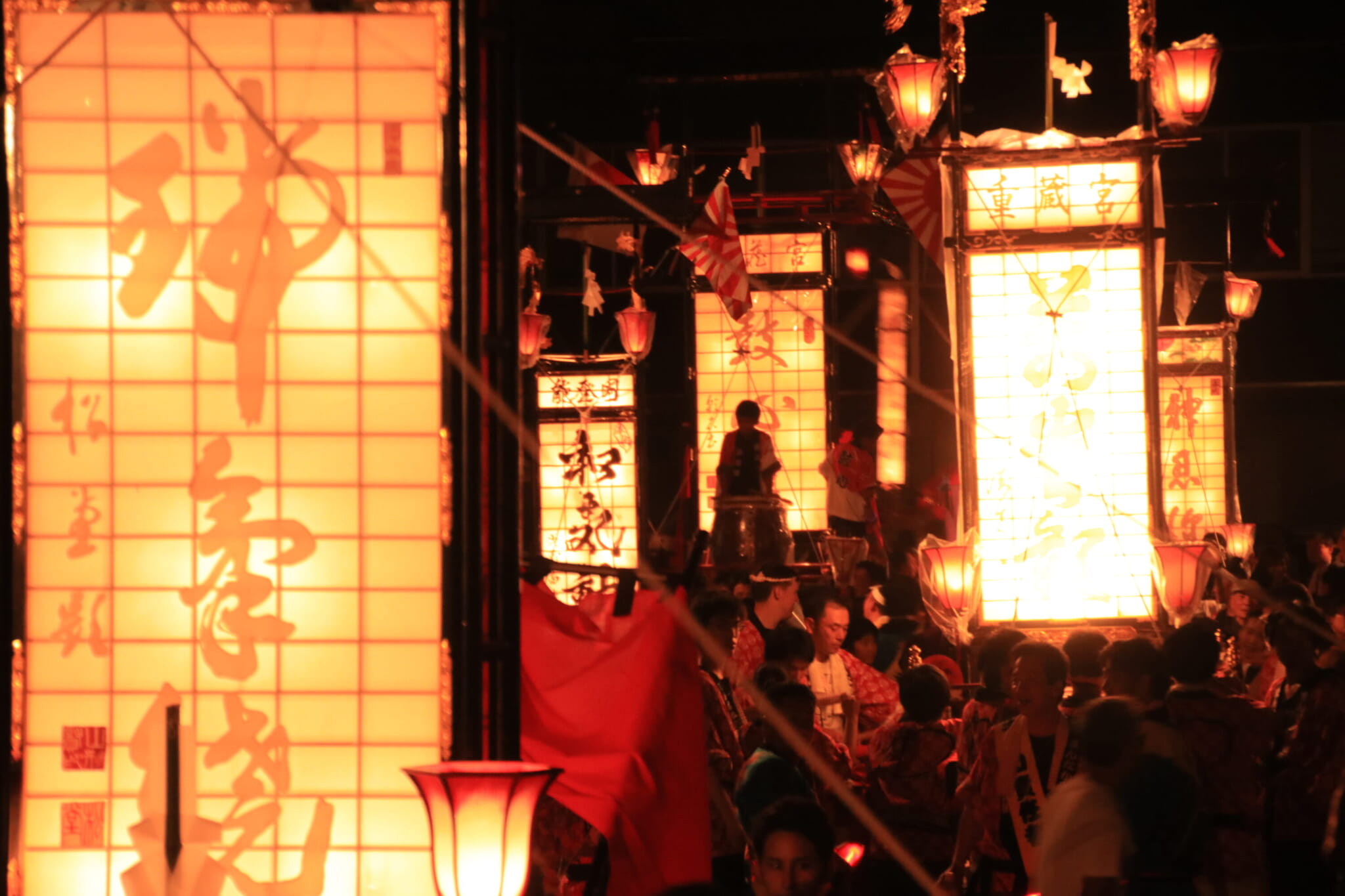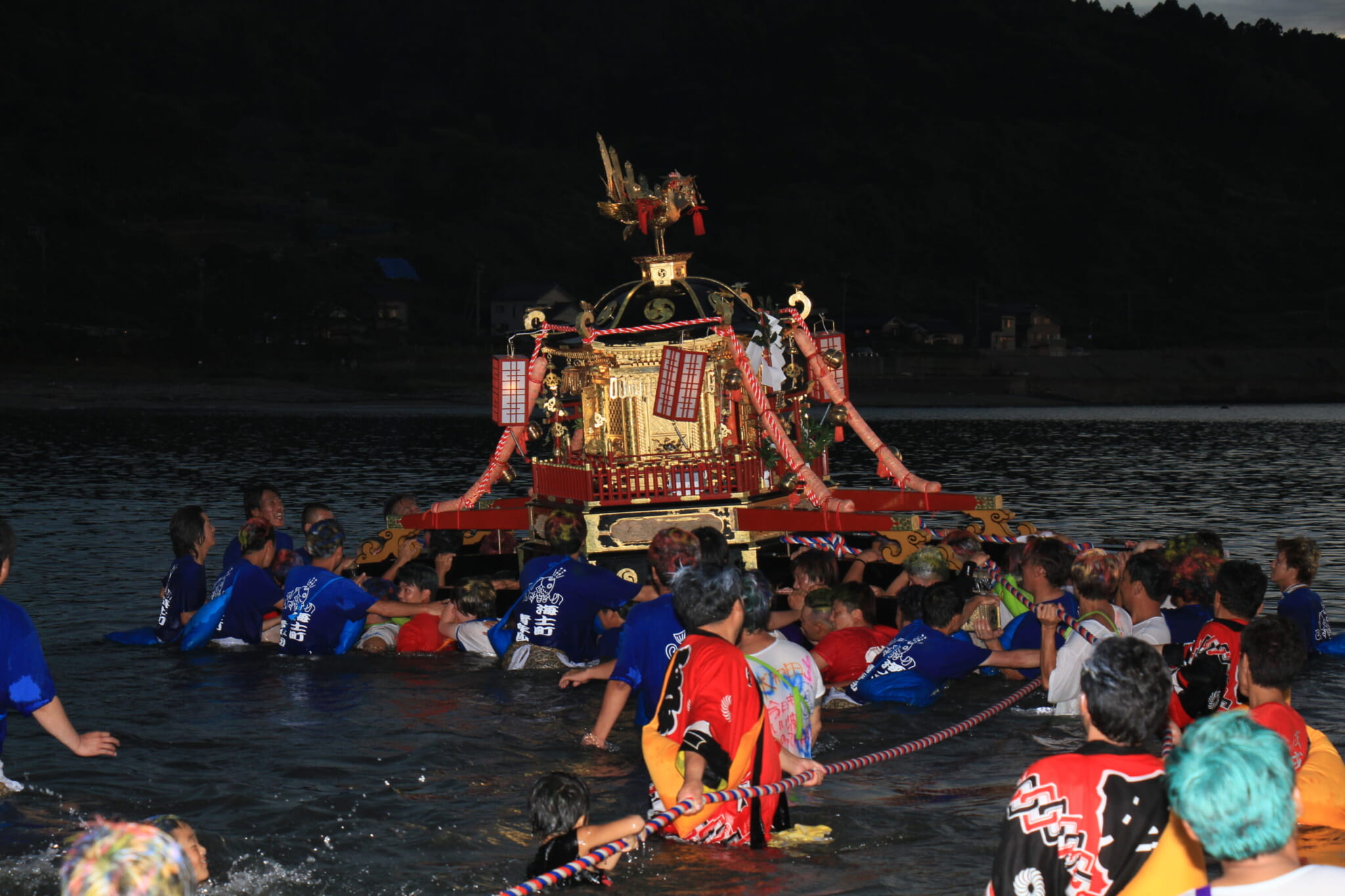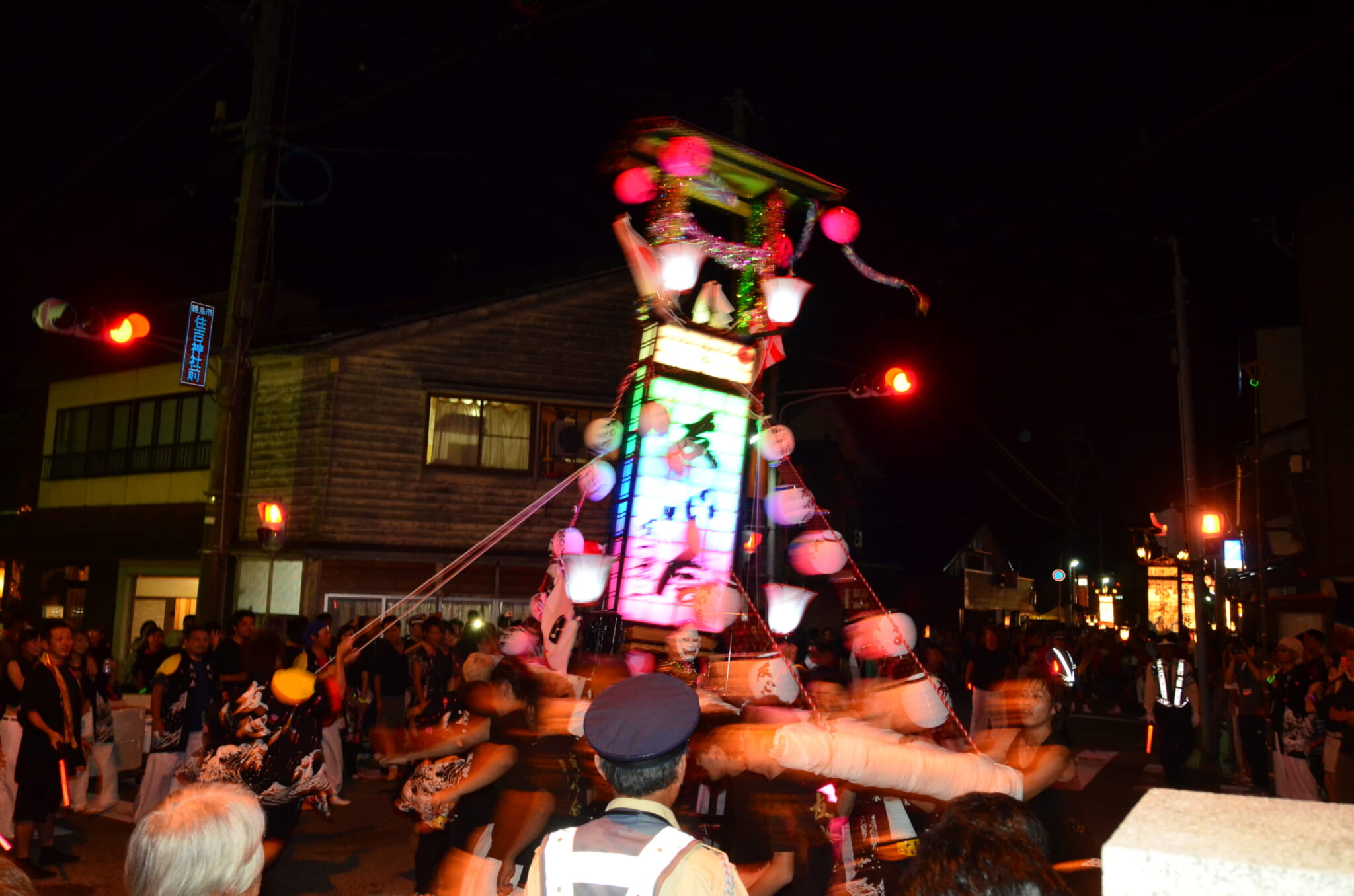Located in the picturesque Ishikawa Prefecture, the Noto Peninsula’s Wajima city is famed for its history, natural beauty, and a charming market culture that today draws in tourists from Japan and abroad. Nestled against the Sea of Japan, Wajima is also known for typically milder summers than Tokyo, making it a great place to enjoy the warmer months without being overwhelmed.
Originally founded during the Middle Ages around a temple that served as the head of the Soto Sect of Buddhism, today known as Sojiji, Wajima continues to maintain close ties with its storied history, while also offering an impressive number of things to see and do for those who visit.

Shiroyone Senmaida rice terraces
Nature and Tradition
One of Wajima’s most stunning and famous scenes is Shiroyone Senmaida. A terrace of rice fields, of which there are precisely 1004, Shiroyone Senmaida is an incredible location overlooking the Sea of Japan. A reflection of tradition, these rice fields are still cultivated by hand due to the extreme terrain and can vary from rolling fields of greenery during spring and summer, to winter wonderlands when laden with snow during the colder months. Between October and March, the fields are illuminated at night-time, taking an already beautiful scene and turning it into something otherworldly.
Keeping in theme with the traditions upon which Wajima was built, the Wajima Morning Market has been running for more than 1,000 years and today remains as popular as ever. Operating every day between 8am and 12pm, except for the second and fourth Wednesday of each month and during New Year holidays, the morning market sees a quaint pedestrian street in the middle of the city lined with brightly colored stalls selling everything from fresh seafood and locally sourced produce, to traditional lacquerware that the city has long been famous for. Known as Wajimai-nuri, Wajima is Japan’s largest manufacturer of this durable yet detailed lacquerware, which today remains the city’s most recognizable craft export.
Further reflecting the artistic craftsmanship Wajima has become known for is the Wajima Kiriko Art Museum, which is home to a number of large, lacquered paper lanterns known as kiriko. These lanterns, which traditionally serve as the focal point in festivals taking place throughout the summer months, are housed here while not being used and can be viewed every day between 8am and 5pm.

Juzo Shrine festival
A City of Celebration
While the aforementioned kiriko lanterns are impressive in their own right when on display, it is during the Wajima Grand Festivals, colorful celebrations of fire and light, that they look their best.
Taking place from August 22 to 25 each year, the Wajima Grand Festivals are four separate celebrations held across the center of Wajima city, each with its own distinct meaning and appearance. Held during the evenings to allow the deities to enjoy the pleasant weather on summer nights, the lacquered kiriko lanterns play a key role in illuminating these unique spectacles.

Okutsuhime Shrine festival
Okutsuhime Shrine
First is the festival of Okutsuhime Shrine, during which young men apply makeup and wear kimonos to appear as women while carrying a portable shrine, known as a mikoshi, down to the nearby ocean. The men then carry the shrine into the water, while children on the beach pull on ropes attached to the shrine, causing it to rock back and forth. While a unique sight, the rocking of the shrine is very important, for it is believed that the longer this continues, the better future fishing catches will be.
Juzo Shrine
Next is the festival of Juzo Shrine. Here, a towering 10-meter-high torch is erected in Wajima Port Marine Town, and attached to it are three good luck charms known as Gohei. During the festival, the torch is set alight while a mikoshi carried by participants circles it. As the torch continues to burn and eventually topple, the Gohei fall to the ground and festival goers scramble to grab them in a tradition believed to bring good fortune to those lucky enough to collect one.
Sumiyoshi Shrine
Following this is the festival of Sumiyoshi Shrine, where drummers wearing traditional masks of Japanese demons Tengu and Hannya lead a portable shrine adorned with lanterns to the Wajima River delta. The festival concludes with an ethereal ceremony of torches.
Wajimazaki Shrine
On the last day of the Wajima Grand Festivals is the Wajimazaki Shrine Festival, famous for its incorporation of a unique mikoshi in the shape of an enormous sea bream. Designed to pray not only for a bountiful catch but also for the safety of those working at sea, fishing boats sporting large fishing flags line up in the harbor during the festival.
This precession of fishing vessels serves not only to tie the festival to the ocean which contributes to much of Wajima’s cultural heritage but also leaves Wajima Grand Festival spectators with the memory of an event unlike anything else in Japan.
For more information on Wajima and other Ishikawa destinations, check out the Official Ishikawa Travel Guide.









